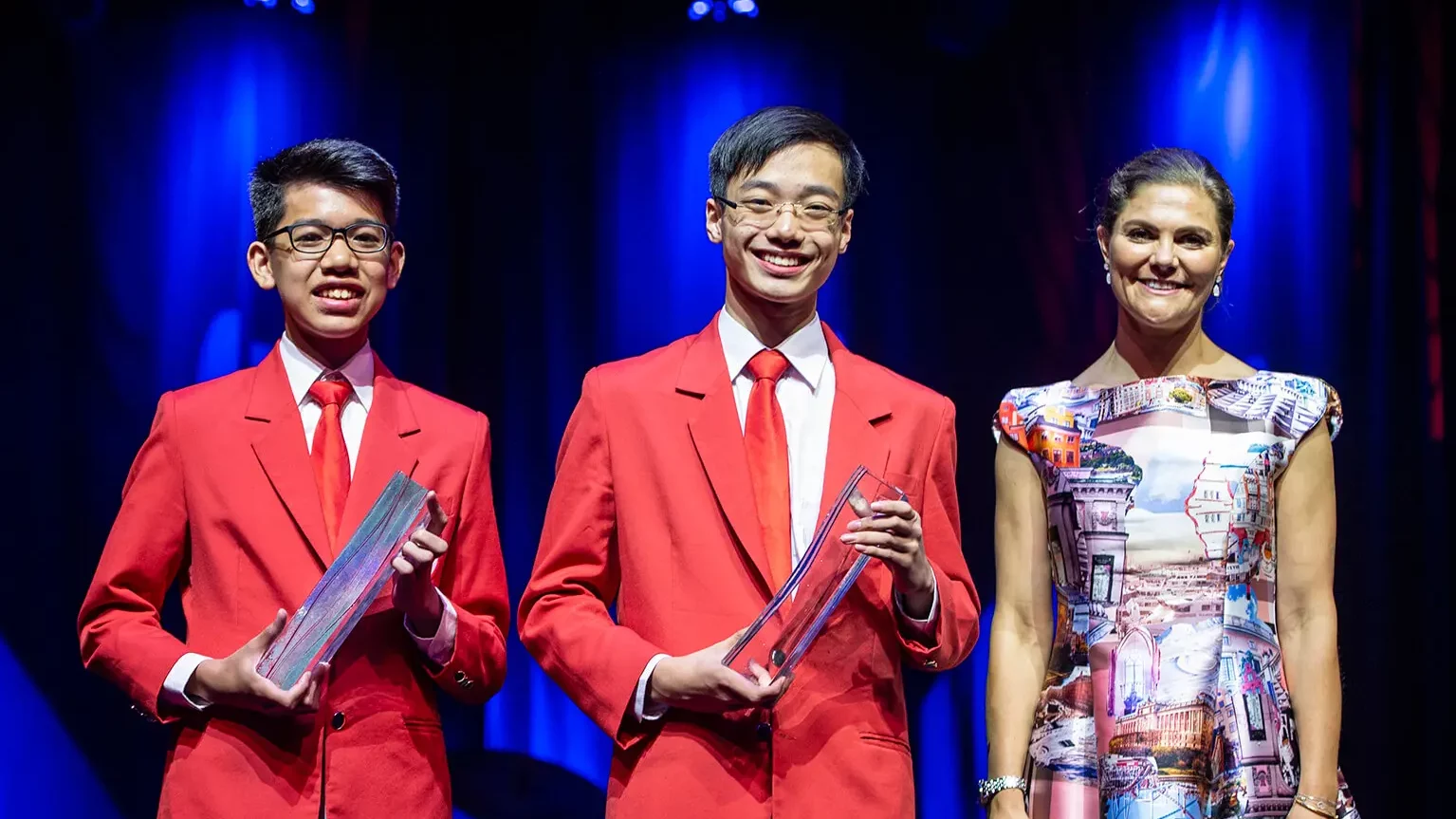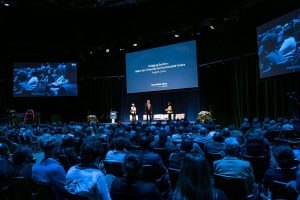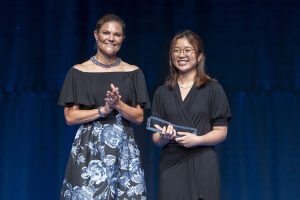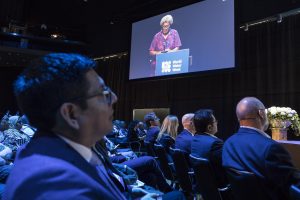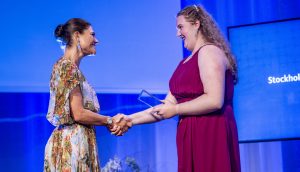Caleb Liow Jia Le and Johnny Xiao Hong Yu from Singapore win Stockholm Junior Water Prize 2018
Stockholm (28 August 2018) – Two students from Singapore, Caleb Liow Jia Le and Johnny Xiao Hong Yu, won the 2018 Stockholm Junior Water Prize for producing reduced graphene oxide, a material that can be used to purify water, from agricultural waste products. H.R.H. Crown Princess Victoria of Sweden presented the prize at an award ceremony during World Water Week in Stockholm.
In their project, Caleb Liow Jia Le and Johnny Xiao Hong Yu developed a new method to produce reduced graphene oxide (rGO), a material that has huge potential to purify water. Using durian rind and sugarcane bagasse the students found a more environmentally friendly and cheaper method for producing rGO.
As the pair received the prize on Tuesday evening, Caleb Liow Jia Le said: “I’m very, very happy! I’m shocked that we won the prize, because I really didn’t expect it!”
The Stockholm Junior Water Prize goes to the winners of an international annual competition with more than 10,000 entries from all over the world. H.R.H. Crown Princess Victoria of Sweden is the Patron of the prize.
In its citation, the Jury highlighted the wide local benefits of the students’ method: “This year’s winning project inspires communities to find local solutions to improve water quality and resource recovery. The project developed a leading edge, inexpensive, and widely applicable method to clean water. Further development of this method will lead to public health and ecosystems protection. Therefore, the project embodies the themes of 2018 World Water Week – Water, Ecosystems and Human Development. The winning project has included concepts of circular economy, nanotechnology, and green chemistry. The project’s success will set new trends in the way we filter water.”
When asked how they would like to take this project further, Johnny Xiao Hong Yu said: “We will definitely try to think of ways to improve it and make it even more sustainable, even more environmentally friendly, so that it can be used to make an impact in the future.”
Torgny Holmgren, Executive Director of SIWI, was very impressed by the students’ innovative project.
“Provision of clean water is one of humanity’s greatest challenges. This year’s outstanding winners have found a way to purify water that is low-cost, builds on locally available resources and can help getting clean water to the 2.1 billion people who still lack it,” Mr Holmgren said.
As part of the Stockholm Junior Water Prize final, a Diploma of Excellence was awarded to Tatsuyoshi Odai and Narumi Sakamoto, two students from Japan. In their project they developed a system that produces food while purifying eutrophicated ponds with a combination of plants, nitrifying bacteria and fungi.
“By adapting existing science and with help from micro-organisms they have converted a water pollution problem into an innovative food production solution,” the Jury said.
About the Stockholm Junior Water Prize
The Stockholm Junior Water Prize goes to the winners of an international annual competition with more than 10,000 entries from all over the world. The competition brings together young people between the ages of 15 and 20 who have conducted water-related projects of proven environmental, scientific, social or technological significance. This year, 48 national finalists from 32 countries competed in the international final held during World Water Week in Stockholm.
About SIWI and World Water Week
SIWI is an international water institute working to solve global water challenges by improving how water is used and managed. By combining expertise with our unique convening power, we influence decision-makers, facilitate dialogue and build knowledge in water issues, thereby contributing to a just, prosperous and sustainable future for all. SIWI organizes World Water Week – the leading annual event on global water issues – and the Stockholm Water Prize and Stockholm Junior Water Prize, which are awarded during World Water Week.
Note to Editors:
- Information about Stockholm International Water Institute; Stockholm Junior Water Prize and World Water Week: worldwaterweek.org and siwi.org
- Online programme of World Water Week: http://programme.worldwaterweek.org
- Press briefings, releases and experts for interview: http://www.worldwaterweek.org/pressroom
- Livestream: http://www.worldwaterweek.org/pressroom/live/
- Pictures: https://www.flickr.com/photos/siwi_water
- Video: https://vimeo.com/siwi; http://www.youtube.com/SIWI_water
- Twitter: @siwi_water, #WWWeek
- Facebook: Stockholm International Water Institute
- Instagram: siwi_youth
- LinkedIn: https://www.linkedin.com/company/stockholm-international-water-institute/
